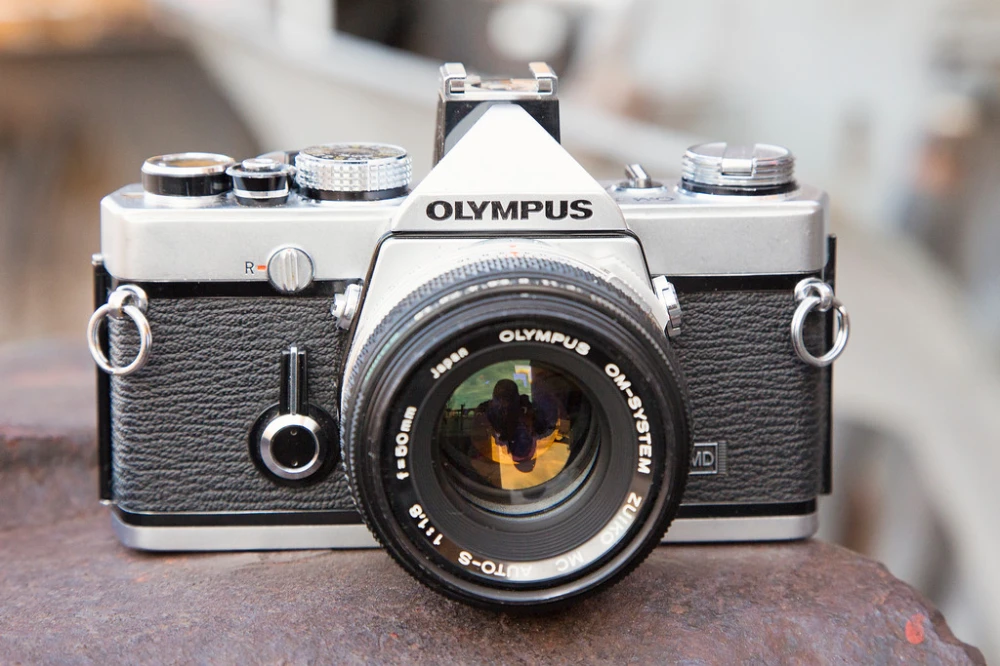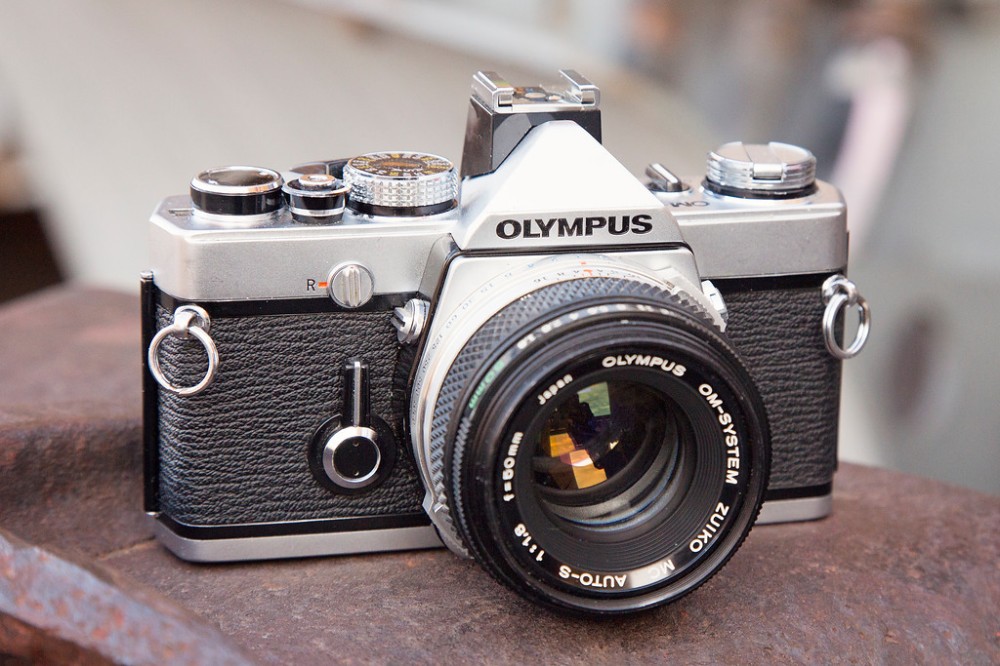Up until last fall I didn’t own a single Olympus camera. Not by choice. They just never seemed to come up on my camera radar as a need to have item. I found someone in the local online classifieds selling an Olympus OM-1 with 50mm lens for $100. The seller indicated she was searching for some other used gear, so I texted her with some items I was willing to trade. When we met and I inspected the OM-1, I found that the film rewind knob had been broken and a poor attempt to fix it was made. And worse, the shutter advance would move, but nothing moved inside the camera. I went ahead with the trade and took it to a local camera shop and learned that the repair was going to be more than the value of the camera. Kind of a disappointment, but with the attitude of nothing to lose, I decided to take it apart and see if there was anything obvious that I could identify as broken. I’m terrible with repairs. I barely know which end of a screwdriver I should be using. And my repairs generally involve a lot of cussing and frustration. This time I surprised myself and managed to get the film advance to work. I took the film rewind knob to my friend Maurice, who has far more patience and repair knowledge than I ever will. He had the knob back together with new parts in no time at all. After everything was working, I cleaned up the outside of the camera and replaced the light seals on the back.

The Olympus OM-1 was released in 1972 as part of the new OM system. Like the Pentax K-1000 and Canon AE-1, the OM-1 has a large following. It’s an all mechanical camera with a full aperture TTL CdS exposure meter that’s represented by a needle visible in the viewfinder. And this camera has a big, bright, beautiful viewfinder. The viewfinder on the OM-1 has made it one of my favorites. It’s a solid camera body, but also compact and lightweight (675g).
To me, the best feature on the OM-1 is where they placed the shutter speed and aperture settings, the lens! At first, this kind of threw me a curve-ball, but the more I use it, the more I like it. With the camera up to your eye, looking through the viewfinder, naturally your left hand is going to be on the lens for focus. Why not put both shutter speed and aperture settings on the lens? You see that you’re under or over exposed with the meter, so using your left hand that’s already on the lens barrel, you can quickly change your shutter speed or f-stop value. My OM-1 is currently paired with a fast 50mm f/1.6 Olympus Zukio lens.
I’m glad I added the OM-1 to the UTFP fleet of cameras. It really is a fantastic SLR. The viewfinder is better than any Nikon, Canon or Pentax camera I have that was made during the same period. The lens is sharp. Moving the aperture control and shutter speed to the barrel was a brilliant move by Olympus. I like having the switch to the meter on top of the body so I don’t forget to power it off. One thing I don’t like on the OM-1 is the film advance. It has a long swing to it, maybe more so than other SLR’s made in the 1970’s. And if the film advance on this body had issues, it’s likely going to happen again. However, if another one came up in the local classifieds for the right price, I wouldn’t hesitate to get it as a backup or parts body.
It’s probably a good point to note, though I refer to this camera as an OM-1, it’s really an OM-1 MD. Shortly after the OM-1 was manufactured in 1973, Olympus started to quickly add accessories and lenses for the OM System. One new accessory was a Motor Drive. The updated OM-1 MD had the necessary mounting holes in the bottom of the body where the OM-1 had none, this being the only key difference.
These images were shot on Kodak Ektachrome 100 (Expired 2007). This is some of my favorite slide film and I’m looking forward to shooting some more Ektachrome in the OM-1 when Kodak re-releases it later this year!















Great write-up on a great camera, Shaun! I happen to have my black OM-1n with me right now after having been shooting on it all weekend. These are great travel cameras because they are so small. It makes it easy to carry a full lens system and plenty of film.
It’s great you were able to repair a camera that would have perhaps sat in a box or gone to the trash otherwise. I like to support local camera repair shops and expect that repair will often cost more than a camera does, being how cheaply film cameras often now sell. But it’s ambitious of you to have given it a go and come out sucessful.
Nice photos too! The 50/1.8 is ubiquitous but a great performer, worth much more than it sells for. I recently also did a write-up on my three OM 50’s, if you’re interested:
https://johnnymartyr.wordpress.com/2017/04/26/olympus-zuiko-50mm-shoot-out/
If you enjoy the shutter speed arrangement on the OM-1, you might also want to check out the Nikon Nikkormat series. There are some ’60’s rangefinders with the shutter speed situated around the lens also. I agree that it’s very ergonomic. Something a friend once pointed out to me about the OM series is how the camera is very small but all the controls and of course viewfinder, are very big. It’s a good approach and seemingly the exact opposite of the modern DSLR where you have a bloated camera with tiny controls.
Anyway, thanks the great post!
LikeLiked by 1 person
Oh oh my, now I have to get mine down and shoot it again. What a great camera. I don’t know why it’s not in regular rotation here.
LikeLiked by 2 people
That’s a gorgeous little camera – time to break out my old film bodies and shake the dust off
LikeLike
My first slr I bought following the Navy’s School of Photography was the OM-2, bought in February 1979. Had it until it was liberated from me in 81. Lives the Olympus line. When I returned to shooting in the early 2000’s, I returned to medium format.
LikeLike